Filter by
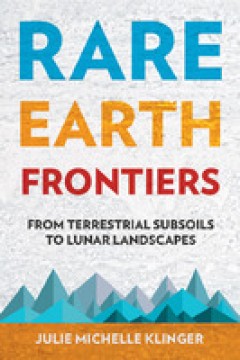
Rare Earth Frontiers From Terrestrial Subsoils to Lunar Landscapes
Owing to their unique magnetic, phosphorescent, and catalytic properties, rare earths are the elements that make possible teverything from the miniaturization of electronics, to the enabling of green energy and medical technologies, to supporting essential telecommunications and defense systems. An iPhone uses eight rare earths for everything from its colored screen, to its speakers, to the min…
- Edition
- -
- ISBN/ISSN
- 9781501714610
- Collation
- xiii, 325p.: ill.
- Series Title
- -
- Call Number
- 553.494 KLI r
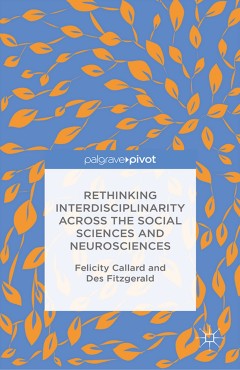
Rethinking interdisciplinarity across the social sciences and neurosciences
This book offers a provocative account of interdisciplinary research across the neurosciences, social sciences and humanities. Setting itself against standard accounts of interdisciplinary 'integration,' and rooting itself in the authors' own experiences, the book establishes a radical agenda for collaboration across these disciplines. Rethinking Interdisciplinarity does not merely advocate int…
- Edition
- -
- ISBN/ISSN
- 9781137407962
- Collation
- x, 157p. : ill.
- Series Title
- -
- Call Number
- 001 CAL r
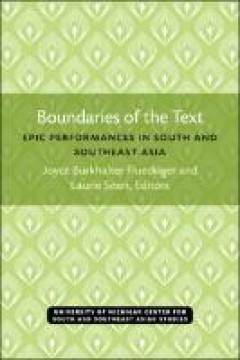
Boundaries of the text : epic performances in South and Southeast Asia
When the Mahabharata and Ramayana are performed in South and Southeast Asia, audiences may witness a variety of styles. A single performer may deliver a two-hour recitation, women may meet in informal singing groups, shaddow puppets may host an all-night play, or professional theaters may put on productions lasting thirty nights. Performances often celebrate ritual passages: births, deaths, mar…
- Edition
- -
- ISBN/ISSN
- 9780472901715
- Collation
- X, 161 p.
- Series Title
- Michigan Papers On South And Southeast Asia, 35
- Call Number
- 781.4 BOU b
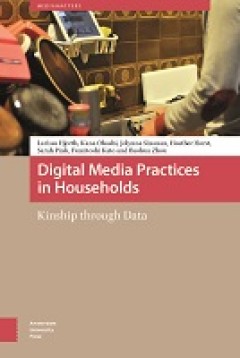
Digital media practices in household: kinship through data
How are intergenerational relationships playing out in the digital rhythms of the household? Through extensive fieldwork in Tokyo, Shanghai and Melbourne, this book ethnographically explores how households are being understood, articulated and defined by digital media practices. It explores the rise of self-tracking, quantified self and informal practices of care at distance as part of contempo…
- Edition
- -
- ISBN/ISSN
- 9789048542062
- Collation
- 205p.: ill.
- Series Title
- -
- Call Number
- 004.678 HJO d

Genealogy, archive, image : interpreting dynastic history in western India, c…
The ethnographic approach to Indian history and genealogy; the making of dynastic history in the kingdom of Jhalavad; the history of Gujarat. ‘Genealogy, Archive, Image’ addresses the ways in which history and tradition are ‘reinvented’ through text, memory and painting. It examines the making of dynastic history in the kingdom of Jhalavad, situated in Gujarat, western India, over th…
- Edition
- -
- ISBN/ISSN
- 9783110539455
- Collation
- XVI, 278 p.
- Series Title
- -
- Call Number
- 954.75 JHA, g
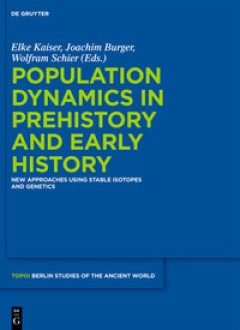
Population dynamics in prehistory and early history : new approaches by using…
Migrations and population dynamics are considered very problematic topics in the fields of ancient studies. Recent scholarship in (pre)historical population has generated new impulses by using scientific approaches using radiogenic and stable isotopes, and palaeogenetics, as well as computer simulation. As a result, the state of migration research has undergone rapid change. Several research gr…
- Edition
- -
- ISBN/ISSN
- 9783110266306
- Collation
- X, 353 p.
- Series Title
- Topoi – Berlin Studies of the Ancient World/Topoi – Berliner Studien der Alten Welt, 5
- Call Number
- 599.9 POP p
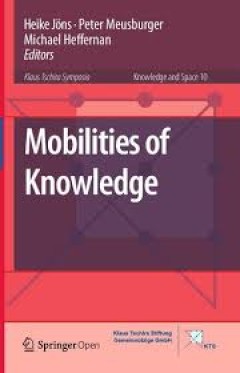
Mobilities of knowledge
This collection of essays examines how spatial mobilities of people and practices, technologies and objects, knowledge and ideas have shaped the production, circulation, and transfer of knowledge in different historical and geographical contexts. Targeting an interdisciplinary audience, Mobilities of Knowledge combines detailed empirical analyses with innovative conceptual approaches. The first…
- Edition
- -
- ISBN/ISSN
- 9783319446530
- Collation
- x, 303p. : ill.
- Series Title
- -
- Call Number
- 304.2 MOB m

Stories from Quechan oral literature
"The Quechan are a Yuman people who have traditionally lived along the lower part of the Colorado River in California and Arizona. They are well known as warriors, artists, and traders, and they also have a rich oral tradition. The stories in this volume were told by tribal elders in the 1970s and early 1980s. The eleven narratives in this volume take place at the beginning of time and introduc…
- Edition
- -
- ISBN/ISSN
- 9781909254879
- Collation
- XII, 533 p.
- Series Title
- World Oral Literature Series
- Call Number
- 970.00497 HAL s

Food of Association: biocultural perspectives on foods and beverages that med…
This fascinating book examines the biology and culture of foods and beverages that are consumed in communal settings, with special attention to their health implications. Nina Etkin covers a wealth of topics, exploring human evolutionary history, the Slow Food movement, ritual and ceremonial foods, caffeinated beverages, spices, the street foods of Hawaii and northern Nigeria, and even bottled …
- Edition
- -
- ISBN/ISSN
- 9780816539321
- Collation
- xiii, 250p.: ill.
- Series Title
- -
- Call Number
- 394.12 ETK f

Anthropology of tobacco
Anthropologists have long studied tobacco, what is today the world's greatest cause of preventable death. Their publications have garnered modest attention, however, even as the academy is increasingly interested in global health, transnational commoditization, pharmaceuticals, and the politics of life and death. We take stock of anthropology's tobacco literature and our discipline's broader ap…
- Edition
- -
- ISBN/ISSN
- 9781138485143
- Collation
- 380 p.; 22 cm.
- Series Title
- Routledge Studies in Public Health
- Call Number
- 362.296 RUS a
 Computer Science, Information & General Works
Computer Science, Information & General Works  Philosophy & Psychology
Philosophy & Psychology  Religion
Religion  Social Sciences
Social Sciences  Language
Language  Pure Science
Pure Science  Applied Sciences
Applied Sciences  Art & Recreation
Art & Recreation  Literature
Literature  History & Geography
History & Geography